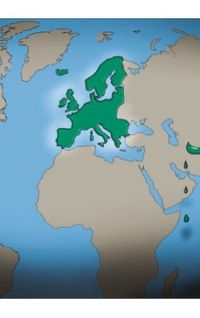Liquidity line
Commodity markets may have settled down in 2023 following the tumult of the previous year, but clients’ hedging and financing needs remained as important as ever. For continuing to expand the range of products and clients it covers while providing innovative hedging and financing facilities, Natixis is IFR’s Commodity Derivatives House of the Year.
![]()
Commodities re-emerged as an important source of bank trading revenues following Russia’s invasion of Ukraine in 2022 and the ensuing market volatility. The problem facing most investment banks was that they were in no position to capitalise on the turbulence after slashing back commodities activities during the previous decade.
Natixis has proven to be an exception. The French lender has bucked the retrenchment trend among many of its rivals to build out its commodities trading and financing capabilities in recent years, allowing it to help clients navigate the recent turmoil with a series of landmark transactions.
That push continued to bear fruit in 2023 despite commodity markets settling down somewhat. Natixis had brought a further 31 commodity clients on board as of November, allowing it to increase revenues with new clients by 16% in 2023 up to that point. That follows the onboarding of 112 clients over the previous two years, which resulted in a 43% revenue increase with new clients in 2022.
“Commodities is very much part of [our] ambition to grow Natixis and the rest of our global market activities” said Claude Lixi, global co-head of commodities markets.
A crucial part of Natixis’ expansion plans has involved broadening the range of products it covers. That includes developing its capabilities in gas and power in Europe and the US to expand those businesses through helping clients hedge their production and consumption needs.
These initiatives have also allowed the bank to diversify its revenues. Natural gas now accounts for over a quarter of Natixis’ commodities business, compared to 11% in 2021. Oil and refined products have also grown in prominence alongside power.
In one notable example, Natixis acted as hedge provider in some prepaid municipal gas and power transactions which allowed municipal utilities to purchase energy at a discount to prevailing market levels through the issuance of 30-year tax-exempt municipal bonds.
“[Increasing] the number of products that we offer to our clients is [in part] to diversify our source of revenue in [a] market that is extremely volatile and getting more volatile,” said Marc Mourre, global co-head of commodities markets.
Broadening its product offering has also strengthened Natixis’ financing activities, which have taken on outsized importance over the past two years. Companies have faced soaring margin requirements on their commodity hedges as markets have swung in response to geopolitical events, creating a significant funding squeeze for many.
Natixis hasn’t hesitated to deploy its sizeable balance sheet to help clients. To do so, the French bank has used structures such as exchange for swaps that switch an exchange-traded futures hedge for an over-the-counter position, which then allow companies to manage their liquidity risk more efficiently.
Even though liquidity demands eased for some companies in 2023 as energy volatility fell, Natixis remained active with clients that still faced challenges. In one example, the French bank helped a major oil and gas producer hedge its European natural gas price and liquidity risk exposure with an exchange for swap transaction that involved a €1.2bn credit line.
“[EFS trades] are really made possible because [we’re] able to grant very big credit lines,” said Mourre. “Obviously, that means taking risk, but taking risk that we understand and accept.”
Elsewhere, the bank executed a series of liquidity swaps to help clients manage the amount of variation margin they must post on their hedges in markets such as German power, Dutch natural gas and European Union carbon emissions allowances.
“How do we support our clients in a high volatility environment? It’s not only about price,” said Lixi. “You could be perfectly hedged from a market risk point of view but face a huge liquidity risk.”
And the bank isn’t done yet. Natixis has plans to bring more clients on board and increase its presence in the Americas and Asia-Pacific region, while also continuing to develop its offering in areas such as EU carbon emissions, gas and power and strategic metals like aluminum, lithium and cobalt.
To see the digital version of this report, please click here
To purchase printed copies or a PDF of this report, please email shahid.hamid@lseg.com in Asia Pacific & Middle East and leonie.welss@lseg.com for Europe & Americas.








